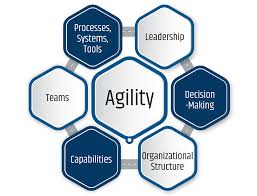
In today’s fast-paced and interconnected business world, teams are becoming the heart and soul of daily operations in many workplaces. While the shift towards team-based structures offers a lot of benefits, it also uncovers some challenges that both organizations and business students need to grasp. This article dives into seven intriguing reasons why teams are on the rise—and the potential downsides that come with them.
In the modern workplace, tasks rarely exist in isolation. Whether it’s in healthcare, technology, or marketing, most projects require a mix of skills and insights from different areas. Teams allow organizations to tackle problems from multiple angles, ensuring that the solutions are both thorough and innovative.
Related learning tip: Students diving into organizational behavior or business management at StudyCreek.com can gain valuable insights from team-based case studies that reflect these real-world challenges.
Innovation flourishes in spaces where ideas can clash and merge. Diverse teams—spanning gender, culture, education, and professional backgrounds—tend to come up with more creative solutions than individuals working solo. This is particularly important in areas like design thinking, product development, and strategic planning.
Team-based projects available at DissertationHive.com help students learn how to effectively leverage these diverse perspectives, making them more versatile in the job market.

In a fast-evolving economy, companies need to be nimble. Teams empower organizations to react quickly to changes in consumer preferences, regulations, and technologies. Rather than waiting for approvals from the top, teams can take the lead, troubleshoot issues on the fly, and adjust strategies as necessary.
With tools like Slack, Zoom, and Asana, collaborating has never been easier. Remote and hybrid teams can effortlessly stay connected, manage their projects, and communicate smoothly—leading to a boost in both productivity and team spirit.
For students gearing up for virtual teamwork, it’s a great idea to explore training resources and simulated team tasks on StudyCreek.com to hone those vital digital skills.
Being part of a team calls for empathy, active listening, conflict resolution, and the knack for giving and receiving feedback. These emotional intelligence (EQ) skills are in high demand among employers and are key focus areas in MBA and HRM programs.
Dissertation coaching at DissertationHive.com integrates EQ development into team project assistance, preparing students for leadership roles.
While collaboration is often seen as the gold standard, it doesn’t always lead to the best results. When teams aren’t managed well, they can easily fall into traps like groupthink, social loafing, or interpersonal conflicts. These challenges can throw a wrench in projects, particularly when roles are fuzzy or leadership is lacking.

At the end of the day, effective team performance doesn’t just happen by chance—it takes careful planning. Having clearly defined roles, strong leadership, trust, and performance metrics is essential. This is where academic training aligns with real-world success. Resources like StudyCreek.com and DissertationHive.com are great for providing structured, evidence-based support for team projects.
Teams are more than just a passing trend—they’re a strategic answer to the needs of today’s fast-paced work environment. While they hold incredible potential for innovation and flexibility, achieving success depends on how well team members are equipped. For students and those just starting their careers, grasping both the advantages and challenges of teamwork is key to thriving in any organization.
Eager to enhance your teamwork skills for academic and professional success? Check out StudyCreek.com and DissertationHive.com today!
SAMPLE QUESTION
Do you believe teams are becoming more common place in conducting day-to-day tasks within the workplace? Why, or why not?
ANSWER
Title: The Growing Prevalence of Teams in Day-to-Day Workplace Operations
Name:
Course: Human Resource Management
Instructor: [Instructor’s Name]
Date:

In today’s work environment, teams have become a go-to structure for handling everyday tasks. This change highlights how modern businesses are adapting to the need for flexibility, creativity, and collaborative problem-solving. For students in human resource management, it’s crucial to grasp why this trend is happening, what benefits it brings, and the challenges it might pose, all to better navigate the dynamics of the workforce.
Teamwork is on the rise, largely because of the intricate nature of organizational operations. Many contemporary projects call for a mix of skills and knowledge that one person alone might not have. As Kozlowski and Ilgen (2006) point out, teams enable the sharing of diverse expertise, which leads to better decision-making and boosts overall organizational performance. In fields like healthcare, technology, and project management, teams play a vital role in bringing together different professional viewpoints and ensuring high-quality results.
Let’s face it, the rise of digital communication tools has really changed the game for remote and hybrid teamwork. With platforms like Microsoft Teams, Zoom, and Slack, collaborating across different time zones has become a breeze (Fosslien & Duffy, 2020). This newfound flexibility has led many organizations to embrace team structures as a standard part of their daily operations, not just something reserved for long-term projects.
But it’s not just about getting things done more efficiently; working in teams also boosts employee engagement. Gallup (2021) found that employees who are part of well-managed, cohesive teams tend to feel more satisfied with their jobs and are more likely to make meaningful contributions to their organizations. As a result, human resource management is increasingly focused on building team cultures that promote collaboration, ownership, and shared success.
That said, this shift does come with its challenges. Teams that aren’t managed well can run into issues like coordination problems, unclear roles, and interpersonal conflicts (Levi, 2020). There’s also the issue of “social loafing,” where some team members might not pull their weight, which can really drag down overall effectiveness if it’s not tackled with clear expectations and accountability. So, while teams can definitely boost productivity, their success really depends on solid HR practices, including strong leadership, clear communication, and effective performance management.
From a strategic HRM standpoint, the growing reliance on teams fits perfectly with the trend of moving away from traditional hierarchical management towards more flattened, decentralized structures. These new models thrive on team autonomy, empowerment, and self-regulation, which can only flourish when backed by the right training and support systems (Mathis, Jackson, Valentine, & Meglich, 2020).
In summary, teams are increasingly becoming a staple in our daily workplace activities, fueled by the need for collaboration, advancements in technology, and a focus on employee engagement. To truly harness the advantages of team structures, organizations need to invest in team-building initiatives, leadership development, and ongoing feedback mechanisms. It’s essential for human resource students and future professionals to be prepared to design and nurture high-performing teams that can excel in the organizations of tomorrow.
Fosslien, L., & Duffy, M. W. (2020). No hard feelings: The secret power of embracing emotions at work. Penguin Random House.
Gallup. (2021). State of the Global Workplace 2021 Report. https://www.gallup.com/workplace/349484/state-of-the-global-workplace-2021-report.aspx
Kozlowski, S. W. J., & Ilgen, D. R. (2006). Enhancing the effectiveness of work groups and teams. Psychological Science in the Public Interest, 7(3), 77–124. https://doi.org/10.1111/j.1529-1006.2006.00030.x
Levi, D. (2020)
Group dynamics for teams (6th ed.). SAGE Publications. Mathis, R. L., Jackson, J. H., Valentine, S. R., & Meglich, P. A. (2020). Human resource management (16th ed.). Cengage Learning.
Delivering a high-quality product at a reasonable price is not enough anymore.
That’s why we have developed 5 beneficial guarantees that will make your experience with our service enjoyable, easy, and safe.
You have to be 100% sure of the quality of your product to give a money-back guarantee. This describes us perfectly. Make sure that this guarantee is totally transparent.
Read moreEach paper is composed from scratch, according to your instructions. It is then checked by our plagiarism-detection software. There is no gap where plagiarism could squeeze in.
Read moreThanks to our free revisions, there is no way for you to be unsatisfied. We will work on your paper until you are completely happy with the result.
Read moreYour email is safe, as we store it according to international data protection rules. Your bank details are secure, as we use only reliable payment systems.
Read moreBy sending us your money, you buy the service we provide. Check out our terms and conditions if you prefer business talks to be laid out in official language.
Read more